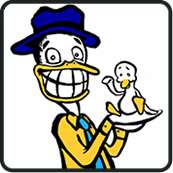More important than anything else, your resume must be easy to read. Who would want to hire you if you can't even convey basic information effectively? Here are our tips for resume beautification:
- Less is more. Take out as many articles (e.g., the, an) as possible. Don't over-explain things. And it's ok to have white space on your resume. It makes it easier to read. Along the same lines, do not justify the margins of your resume (they sometimes make sentences look weird, because it forces the spacing). Instead, make the right margin "jagged."
- Make sure your name stands out. Make your name in a bigger font, put it in all capitals, bold it, do whatever you have to do to make sure that your interviewer can glance down and easily read your name. If you have an unusual first name, put some kind of indication of your gender (perhaps a middle name).
- Do not use wacky fonts. Unless the potential job is for advertising, design, or some other creative field, you should stick to the traditional easy-to-read fonts such as Times, Palatino, Helvetica, or Ariel. There is a very good reason for this: many companies scan received resumes into a computer. If you have crazy fonts, the computer will mis-scan your resume and all the reader will see is gobbledygook.
- Highlight what you want to be read. The most important items should be bolded, underlined, capped, or highlighted in some way that will draw attention to them.
- Be consistent. Whatever you do, be it with capitalization, italicizing, bolding, indenting, whatever it is, keep it consistent throughout the resume. If you don't the reader will think that you either screwed up, or that you don't pay attention to detail.
SoYouWanna know more? Check out our full-length article SYW baby-sit an infant?

